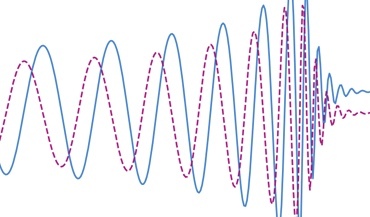 Gravitational memory and spacetime symmetries
Gravitational memory and spacetime symmetries
Symmetries of spacetime infinitely far away from gravitational fields may hint at new laws of nature
Boris Goncharov, Laura Donnay, Jan Harms
PRL | arXiv.org | Code repository (GitHub)
General Relativity (GR) yields a number of gravitational wave memory effects that correspond to symmetries of spacetime infinitely far away from gravitational fields. The leading-order memory effect manifests as a permanent displacement of test particles following a passage of a gravitational wave. There is almost no doubt among GR experts that this memory effect is present in nature, and it may even be detected by current ground-based laser interferometers such as LIGO and Virgo at design sensitivity. Whereas the corresponding symmetries, pioneered by Bondi-Metzner-Sachs (BMS), hint at the fundamental mathematical connection between gravity and quantum fields in the low-energy "infrared" regime. The idea is that by examining the symmetries at the boundaries of spacetime, we could uncover patterns that hint at a holographic principle in action. This principle proposes a duality between gravitational scattering in asymptotically flat spacetimes and a conformal field theory living on the celestial sphere.
We discuss current and future experimental efforts to observe and measure gravitational wave memory, and whether memory may be used to infer nature's asymptotic symmetries. In particular, we provide a proof-of-principle study for estimating memory strain amplitude and selecting between different spacetime symmetry scenarios. We further find that the presence of gravitational wave memory may actually allow us to perform better measurements with future gravitational wave detectors.
 Gravitational memory and spacetime symmetries
Gravitational memory and spacetime symmetries
Symmetries of spacetime infinitely far away from gravitational fields may hint at new laws of nature
 The nanohertz gravitational wave background
The nanohertz gravitational wave background
Is the common-spectrum process observed with pulsar timing arrays a precursor to the detection?